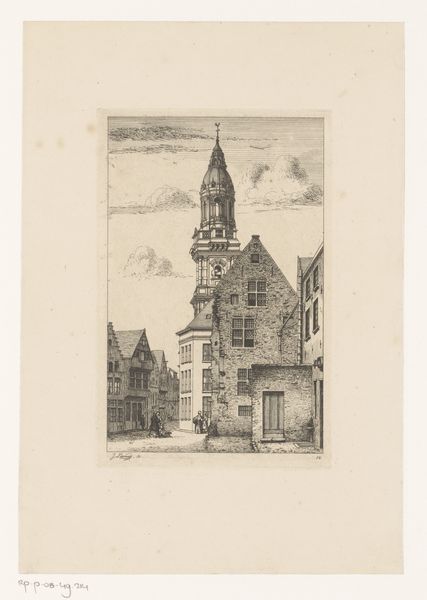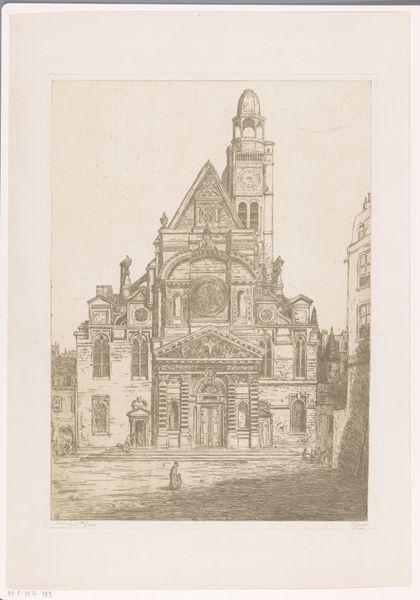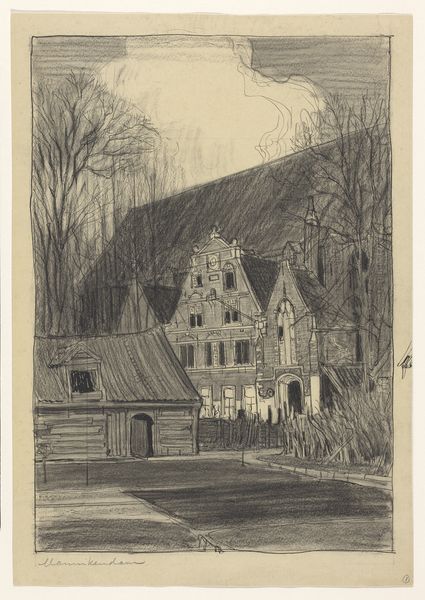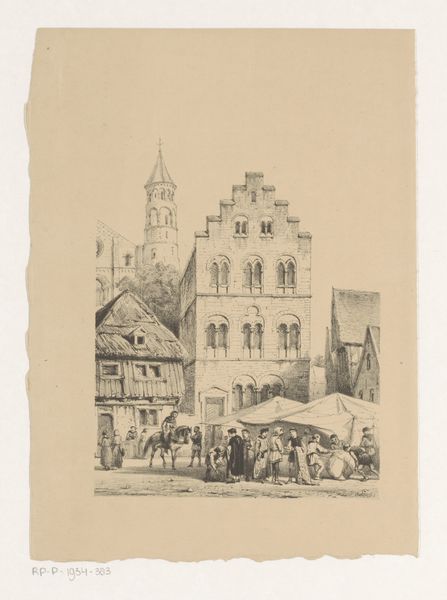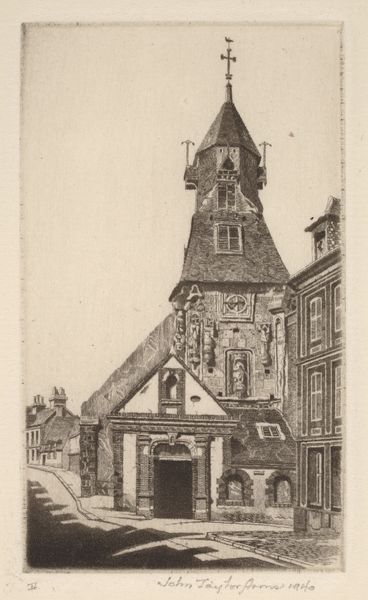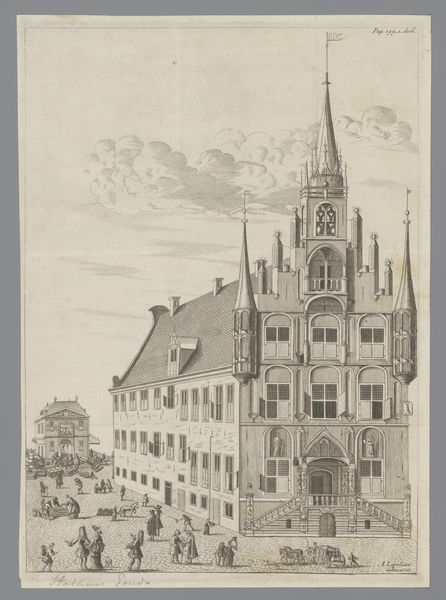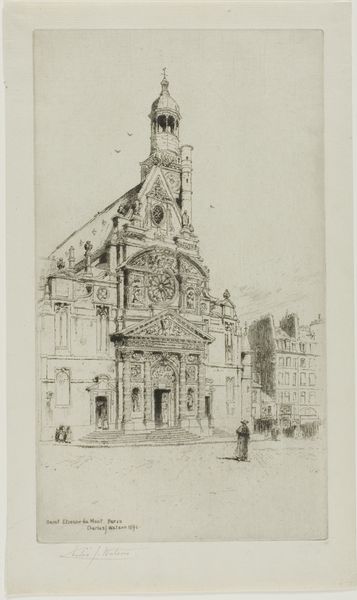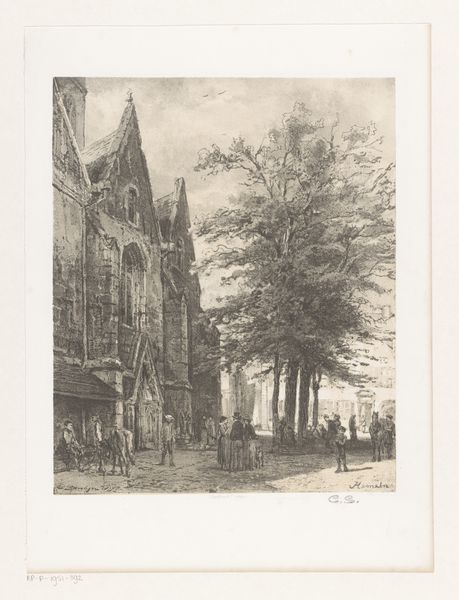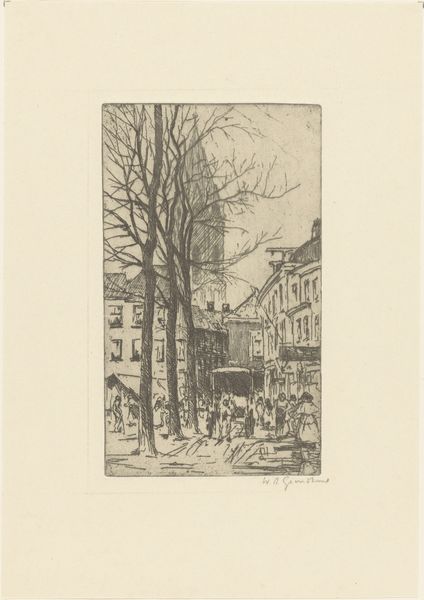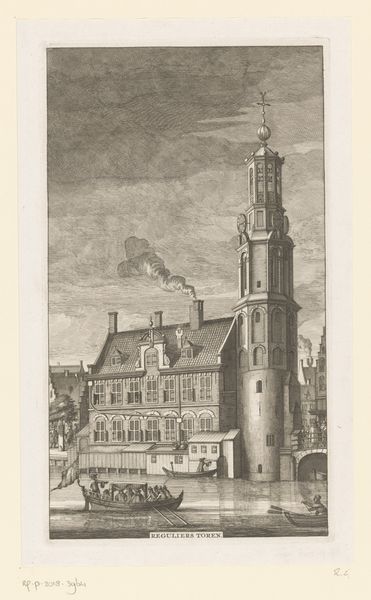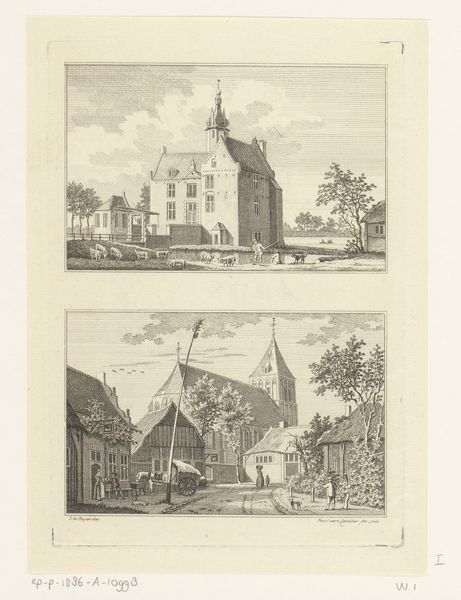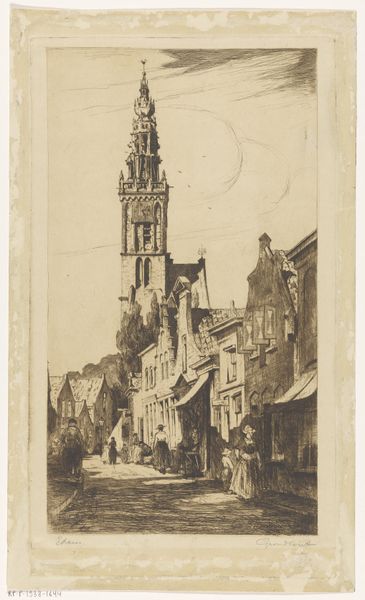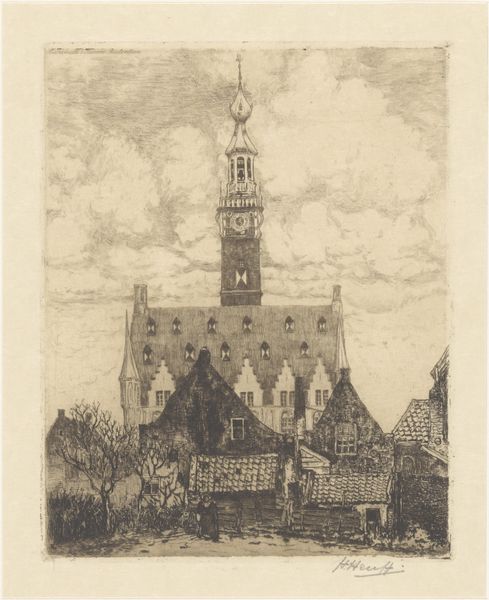
Gezicht op de Munttoren vanaf de bloemenmarkt op het Singel 1901 - 1969
0:00
0:00
print, etching
# print
#
etching
#
cityscape
#
realism
Dimensions: height 142 mm, width 95 mm
Copyright: Rijks Museum: Open Domain
Curator: Editor: So, this etching is "Gezicht op de Munttoren vanaf de bloemenmarkt op het Singel" by Johannes D. Scherft, made sometime between 1901 and 1969. It feels incredibly detailed for a print, almost like a photograph, but much softer. What draws your eye to it? Curator: Immediately, I'm interested in the etching process itself. Think about the labor involved: the artist carefully manipulating acid to corrode the metal plate, creating the fine lines we see. And consider how this print, as a multiple, makes this scene of Amsterdam accessible. What do you think the market stalls below suggest about daily life at the time? Editor: It seems everyday, normal. The Munttoren is an icon, but here it's just… part of the background to people buying flowers. Does that democratizing effect change the perception of such an important monument? Curator: Exactly. The print transforms the tower from a symbol of power to an element within a bustling, commercial landscape. Notice the level of detail dedicated to the market stalls. It’s the flower market, not the Munttoren, that drives this picture, don’t you agree? Scherft chooses a perspective in which the tower isn't even central! The focus seems firmly on these objects of production. Editor: It's interesting to think about how the print medium, something relatively accessible, elevates everyday commerce, perhaps even at the expense of traditionally "important" architectural subjects. Curator: Precisely! The focus isn’t on the high art of architecture, but on the more tactile aspects of life: what’s bought and sold, who profits, and what everyday labor does it demand? This forces us to confront traditional notions of artistic subjects. Editor: I never would have considered it in terms of labor and economics. Now it seems incredibly clear and central to interpreting the print! Curator: Seeing the art market and social context so plainly enhances our understanding, doesn’t it?
Comments
No comments
Be the first to comment and join the conversation on the ultimate creative platform.
